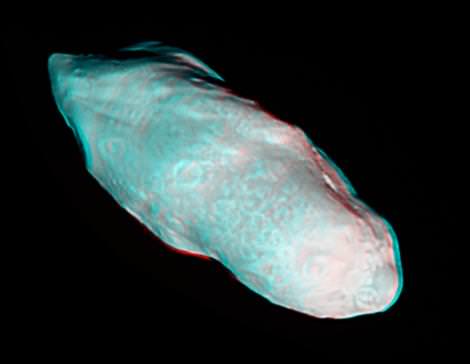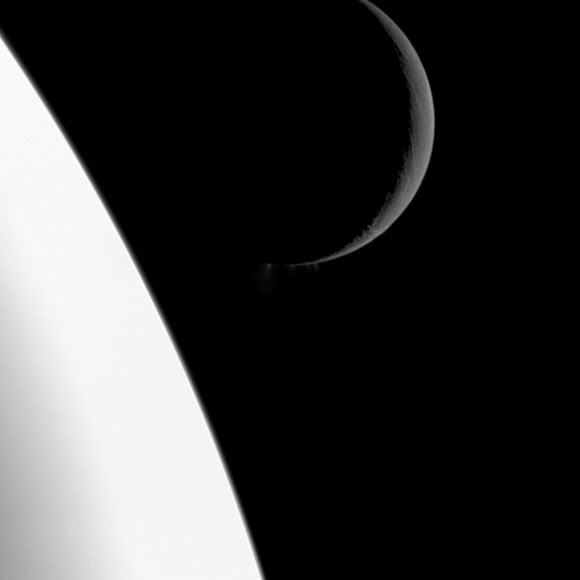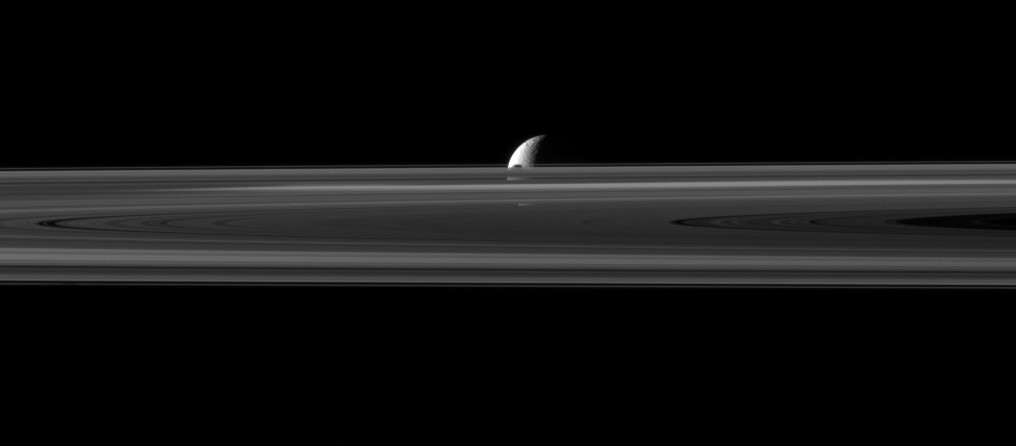[/caption]
The Cassini mission keeps churning out the hits, and here’s a collection of some of the latest stunning images released by the CICLOPS (Cassini Imaging for Central Operations) team. Above, the small moon Janus is almost hidden between the planet’s rings and the larger moon Rhea. The northern part of Janus can be seen peeking above the rings in this image of a “mutual event” where Janus (179 kilometers, 111 miles across) moved past Rhea (1,528 kilometers, 949 miles across). Mutual event observations such as this one, in which one moon passes close to or in front of another, help scientists refine their understanding of the orbits of Saturn’s moons. Click here to see a movie of the event.

Grab your 3-D glasses for this one! This 3-D view is a close-up of Saturn’s potato-shaped moon Prometheus, showing the moon’s leading hemisphere. The image was created by combining two different black and white images that were taken from slightly different viewing angles. The images are combined so that the viewer’s left and right eye, respectively and separately, see a left and right image of the black and white stereo pair when viewed through red-blue glasses.

At first glance, you might think this scene simply shows a bright chunk of Saturn, along with a crescent of the moon Enceladus at top right. But a closer look at the center of the image reveals a dramatic surprise: plumes of water ice spew out from the famed fractures known as “tiger stripes” near the south pole of the moon. And one other surprise: Although it may appear that Enceladus (504 kilometers, 313 miles across) is in the background here, the moon actually is closer to the spacecraft than Saturn is. This view looks most directly toward the side of Enceladus that faces away from Saturn. North on Enceladus is up and rotated 1 degree to the left.
For more great images, check out the CICLOPS website, or NASA’s Cassini website.


awesome. especially the ciclops animation on their site.
Thank you 🙂
You can clearly see the outgassing vents on Enceladus.
LC